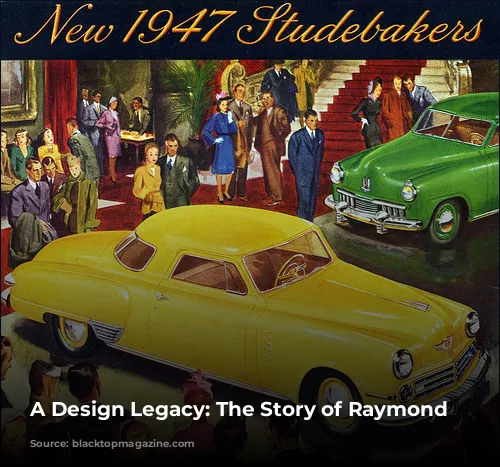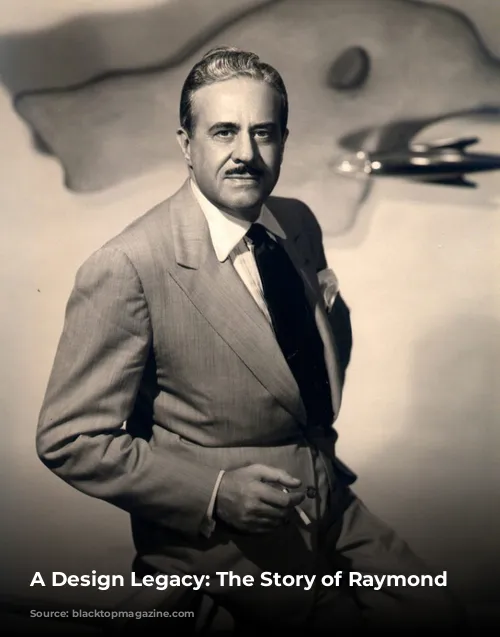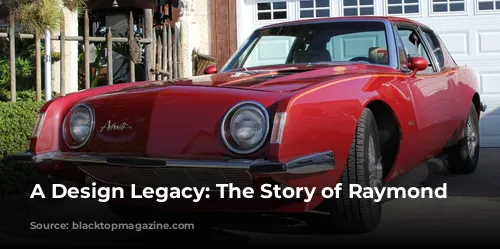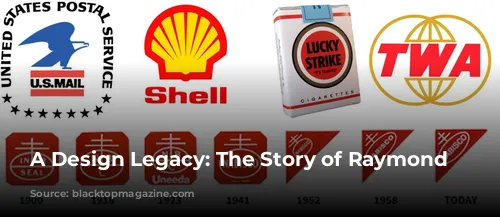Raymond Loewy, a name synonymous with iconic design, left an indelible mark on the American landscape. His influence extends from the sleek lines of iconic consumer products to the soaring heights of space travel.
This article delves into the fascinating life and career of this French-born American design legend.

From Childhood Passions to Design Stardom
Raymond Loewy’s love for design manifested early in life. At just 15 years old, in 1908, he invented a rubber band-powered model airplane. This was a mere five years after the Wright brothers’ groundbreaking first flight, a time when the very concept of human flight was still novel and awe-inspiring. Young Loewy wasn’t content simply with creating his invention; he craved to share it with the world. He took his model airplane on tour, performing captivating demonstrations at small theaters, where the airplane would gracefully take flight, soar over the audience, and loop back to him.
Loewy’s passion for design, combined with his entrepreneurial spirit, set the stage for his rise to fame. He believed that “things that fly should be simple and beautiful,” and this mantra became the foundation for his design philosophy. He understood the importance of aesthetics and functionality, recognizing that a design needed to be visually appealing while also meeting practical needs.

Shaping America’s Everyday Objects
Loewy’s remarkable design career blossomed in the 1930s, a period of immense change and innovation in America. He quickly established himself as a leading figure in industrial design, leaving his mark on everything from everyday household appliances to iconic corporate logos.
Loewy’s signature style was characterized by its streamlined elegance and clean lines, reflecting the spirit of modernism. He was a true visionary, able to transform ordinary objects into iconic symbols of American design.

A Design Maestro: Transforming Brands and Industries
Loewy’s impact on American design is evident in the vast array of iconic brands and products he reshaped.
His design portfolio includes some of the most recognizable logos in the world, such as Nabisco, Shell, Exxon, TWA, BP, and Lucky Strike. He transformed the humble Coldspot refrigerator from a clunky appliance into a sleek piece of modern furniture. His work also included the Coca-Cola vending machine and bottle, the blue streetside U.S. Mailbox, and the modern wire-frame grocery cart. He designed everything from a trashcan at Pennsylvania Station to the GG1 electric locomotive that served the Philadelphia-New York-Washington line for nearly 40 years.
His design for the GG1 locomotive was revolutionary, influencing the bullet-style design of trains and vehicles for years to come.
Loewy’s influence extended to the automotive industry. He established a design division at Studebaker, where he and his team created some of the most influential vehicles of all time, including the iconic “Starlight” body with its wraparound rear window and the legendary bullet-nosed Studebaker models of 1950 and 1951.

Recognized as a Design Visionary
Loewy’s accomplishments gained him widespread recognition and respect. In 1949, he graced the cover of Time magazine as the personification of industrial design. He had five offices across the country, generating a staggering $3 million a year in revenue, which translates to approximately $36.4 million today.
His genius for design wasn’t just about aesthetics; it was also about understanding the power of marketing and sales. Loewy recognized that his high design fees could be recouped through increased sales and manufacturing efficiency. He convinced his clients that good design wasn’t just about aesthetics but also about profitability.

Beyond the Earth: Loewy’s Unforgettable Legacy
Loewy’s remarkable career spanned decades and went beyond everyday products. He designed the livery for Air Force One at the request of President John F. Kennedy, and even worked as a Habitability Consultant for NASA designing the Skylab space station, demonstrating his influence even beyond Earth.
His enduring legacy is reflected in the countless products and brands that continue to shape our lives. Raymond Loewy’s story is a testament to the power of design to not only shape our physical world but also to inspire and influence our lives.
Loewy’s most famous quote perfectly summarizes his design philosophy: “Good design keeps the user happy, the manufacturer in the black, and the aesthete unoffended.” He understood that design wasn’t just about beauty; it was about creating products that were functional, desirable, and profitable.









